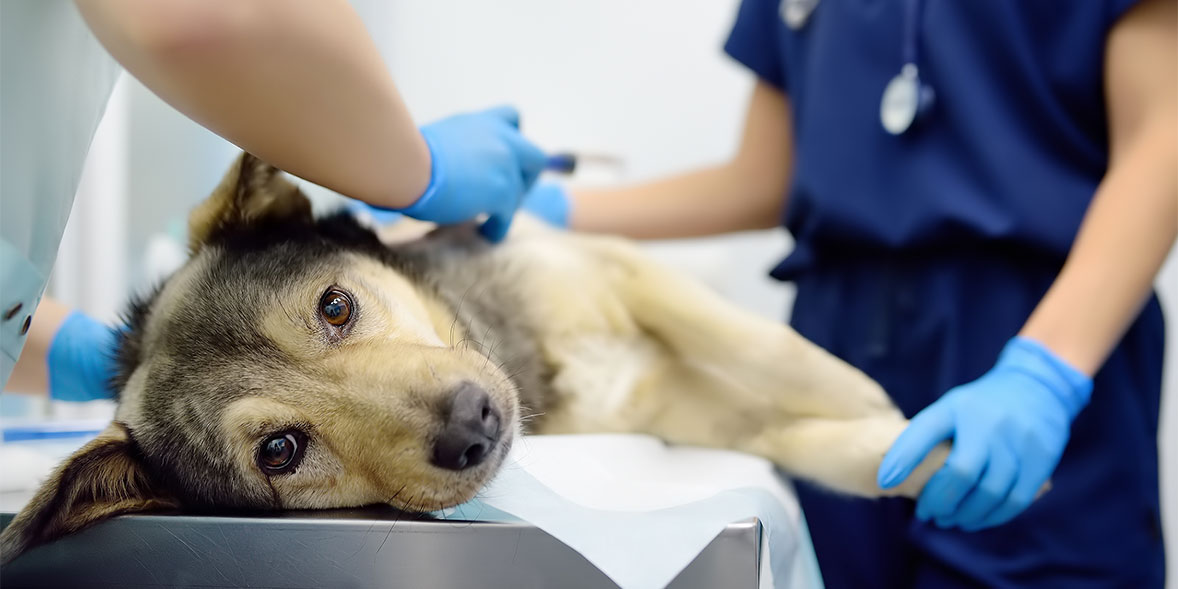
Compare pet insurance deals
Check Which? insurance ratings and compare deals using the service provided by Stickee
Get a quoteBy clicking a retailer link you consent to third-party cookies that track your onward journey. This enables W? to receive an affiliate commission if you make a purchase, which supports our mission to be the UK's consumer champion.

One in six pet insurance claims for dogs made during spring and summer last year were caused by grass seed injuries, according to Tesco Insurance – with the average claim costing £392.
Claims tend to peak in July and August when dogs are out more in dry, grassy areas. Tesco also reported 1,488 claims so far this year for dogs swallowing foreign objects, such as picnic scraps or packaging, with an average claim cost of £1,401.
With warmer weather and more time spent outdoors, dog owners are being warned to watch for seasonal risks – and to check that their insurance covers them.

Check Which? insurance ratings and compare deals using the service provided by Stickee
Get a quoteMost pet insurance policies cover treatment for grass seed injuries, as long as the problem isn’t linked to a pre-existing condition.
These claims are typically classed under foreign body removal, so if your policy includes this, you should be able to claim.
Data from Tesco Insurance shows 162 grass seed claims in 2024, with 160 paid out. Only two were declined – one submitted before the policy started, and one during an exclusion period. This suggests that, in most cases, grass seed injuries are covered if your policy conditions are met.
The average payout was £371.61. With many policies carrying an excess of around £120, most owners still received more than £250 back after the excess was deducted.
If your dog is especially active outdoors in summer, check your policy wording to confirm foreign body removal is listed, and review your excess to understand what you’d pay towards a claim.
Grass seed injuries often get caught in dogs' fur and work their way into the skin, especially between the toes, or in the ears or eyes.
You might notice your dog licking or chewing a particular area, limping, or showing signs of swelling or redness. In some cases, the seed may be visible.
Check your dogs' coat and paws regularly after walks, especially in dry grassy areas. Catching an injury early can help you avoid more serious complications, and bigger vet bills.
If a grass seed is simply stuck in your dog’s fur, you can usually remove it gently yourself. But if it has pierced the skin or your dog is showing signs of pain, it’s best to contact your vet.
Left untreated, lodged grass seeds can cause discomfort, infection and swelling, which may require professional treatment such as removal and antibiotics.
Acting quickly can prevent complications and help your dog recover more comfortably. In the meantime, keep your dog from further irritation by discouraging licking and keeping the affected area clean.
Grass seeds aren’t the only issue to be aware of during the warmer months. Tesco Insurance highlights several common causes of claims at this time of year:
Pet insurance protects you from unexpected vet bills, but premiums can quickly add up. Here are five practical ways to keep your cover affordable without sacrificing the protection your furry friend needs:
Our pet insurance provider reviews provide useful information on the cover offered and how insurers compare on price and service, helping you find a policy that fits your needs and budget.